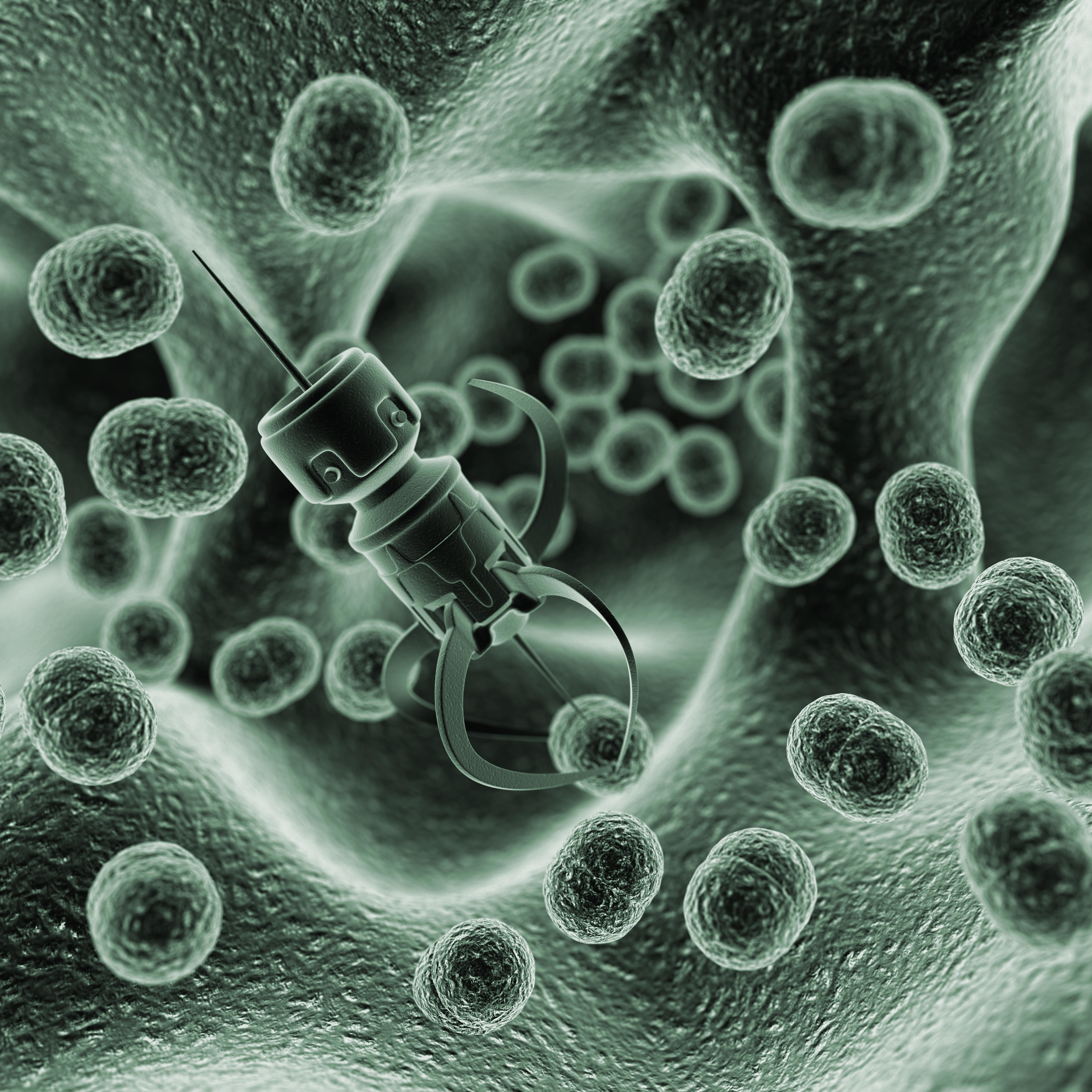This scientist wants to build a teeny-tiny robot to zap diseases in your body
A breakthrough in nanotechnology could open new avenues for medical treatment


Pretty much everyone agrees: Ants are annoying. But the tiny pests have a big strength; they produce really big forces for a creature so small. Just think of a row of workers dragging a leaf to their nest for dinner. Now, think of a row of infinitesimal "ants" exerting huge pressure to, say, push their way into living cells and fight off a disease. That's what Jeremy Baumberg, a physicist and professor of nanophotonics at the University of Cambridge, thinks his newest discovery — tiny machines mere billionths of a meter wide — could one day accomplish.
Baumberg wasn't looking to discover the world's smallest engine. He was working on nanotechnology to make large screens change color when he noticed something strange.
At room temperature, charged gold particles that had been coated with a temperature-responsive polymer called pNIPAM, then placed in a gel, attracted water. But when they were heated the particles unexpectedly collapsed, expelling that water and clinging tightly together. Upon cooling again, they pushed apart quickly and with massive force. It took less than a nanosecond for the particles to push apart. "It's too fast for us to measure at the moment," says Baumberg.
The Week
Escape your echo chamber. Get the facts behind the news, plus analysis from multiple perspectives.

Sign up for The Week's Free Newsletters
From our morning news briefing to a weekly Good News Newsletter, get the best of The Week delivered directly to your inbox.
From our morning news briefing to a weekly Good News Newsletter, get the best of The Week delivered directly to your inbox.
The key thing that he and his research team recognized was that when the nanoparticles shook off water, they tightened into what could be thought of as a really small spring with plenty of potential energy. Cooled just a bit, they snapped back to their original form with an unusually large amount of force. (The nanoparticles also changed color when they heated and cooled, from red to blue and back again.)
Baumberg thinks that the phenomenon could be used to create nano-engines that work like pumps, communicate with one another, sense their environments, and even find their way through water. Because the number of particles can be controlled, they could be used to build different, tiny machines that can't be detected by the naked eye. The researchers called their find, which was recently published in the journal PNAS, actuating nano-transducers (ANTs).
Now that they know what the little gold particles are capable of, says Baumberg, there's more work to be done. Since their initial research, the team has figured out how to make just one particle act in the same way as the group, producing color changes and forces; he calls it "weightlifting."
"If we're going to make what we call nano-machines, we think that we can do it with just two particles that repel each other and attract each other," he says. The discovery could help scientists build tiny machines that filter certain particles from blood or a cell, or create what Baumberg describes as "chemical refineries" that pump medicines into hard-to-reach areas.
A free daily email with the biggest news stories of the day – and the best features from TheWeek.com
"We lucked out by discovering that there's a simpler way," says Baumberg. Since the process is not intrinsically expensive, he says, it will be quick to scale and commercialize. (The team plans to abandon gold at some point in favor of a cheaper metal that acts similarly.)
Baumberg and his team have protected the concept through a patent and are looking into how to commercialize their discovery. But he warns that there isn't a market for nano-machines — as of yet, they simply don't exist. Though he envisions the concept's earliest applications in personalized health care, he thinks that its true value lies in the innovations his innovation will spur.
"It's trying to be clever with simple components rather than [using] all of the sophisticated tools we've developed over the years," he says. Simple components, he adds, mean practical and real answers — and along the way, he expects to discover applications he hasn't even dreamed of yet. "We'll probably find loads of other things. It may or may not work, perhaps, but it will set us on a direction."
Erin Blakemore is a journalist from Boulder, Colorado. Her work has appeared in The Washington Post, Time, Smithsonian.com, mental_floss, Popular Science and more.
-
 Is a social media ban for teens the answer?
Is a social media ban for teens the answer?Talking Point Australia is leading the charge in banning social media for people under 16 — but there is lingering doubt as to the efficacy of such laws
-
 Magazine crossword: 1499
Magazine crossword: 1499Puzzles The weekly crossword from The Week
-
 Political cartoons for January 16
Political cartoons for January 16Cartoons Friday’s political cartoons include the Nobel Peace prize, the wrong island, and more
